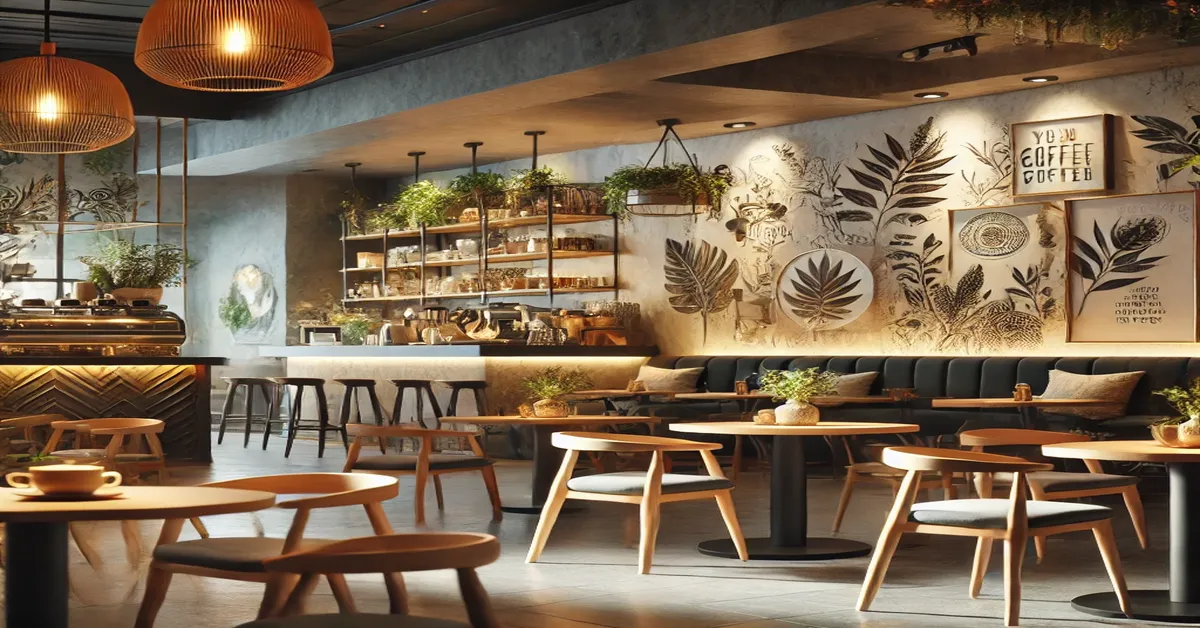In today’s competitive café culture, creating an inviting space is just as important as serving great coffee. The ambiance of a café greatly influences the customer experience and can be the difference between a one-time visit and a loyal patron. Cafe interior design plays a pivotal role in setting the tone, reflecting the brand’s identity, and ensuring functionality. Here are expert tips to help you craft a welcoming café space that leaves a lasting impression.
Understanding Your Brand Identity
The first step in effective cafe interior design is aligning the space with your brand identity. Every design element, from the color palette to the furniture, should reflect the café’s personality and resonate with its target audience. For example, a minimalist design with clean lines and neutral tones works well for modern, upscale cafés, while a cozy, rustic aesthetic with warm colors and wooden accents is ideal for a more laid-back, community-oriented café. Defining your brand’s story and translating it into the physical space helps create a cohesive experience for customers.
Optimizing Space Utilization
Space optimization is crucial, whether you’re working with a small coffee shop or a spacious café. Smart layout planning ensures smooth customer flow and operational efficiency. Modular seating can accommodate different group sizes, while distinct zones for ordering, dining, and lounging enhance functionality. Multi-functional furniture, such as benches with storage, helps maximize utility in smaller spaces. Well-planned layouts balance practicality with aesthetics, ensuring every inch of space is used effectively.
Selecting Appropriate Furniture
Comfort and style are equally important when choosing café furniture. Sturdy tables, comfortable chairs, and durable materials are essential for high-traffic spaces. Materials like wood, metal, or laminate offer durability, while upholstered chairs or benches provide added comfort. The furniture design should align with the overall theme, such as industrial-style stools for modern interiors or vintage armchairs for a classic look. Carefully selected furniture not only enhances the aesthetic but also encourages customers to stay longer, boosting sales and satisfaction.
Lighting: Setting the Mood
Lighting is one of the most impactful elements of cafe interior design. It enhances the visual appeal of the space and sets the mood for customers. Warm ambient lighting creates a cozy and inviting atmosphere, while task lighting at counters and workstations ensures practicality. Decorative elements or artwork can be highlighted with accent lighting to add depth and character. Natural light can also create a refreshing ambiance, complemented by carefully chosen fixtures to enhance the space further.
Incorporating Functional Design Elements
A successful café layout is one that seamlessly combines style with functionality. Practical design features such as efficient service counters, strategically placed seating, and easy-to-navigate pathways are essential. Clear visibility of the menu and displays ensures customers can easily make choices, while sufficient space for staff movement behind counters enhances efficiency. Including accessible seating options ensures that all customers, including those with special needs, feel welcome. Balancing function with style ensures that cafés not only look stunning but also operate smoothly.
Adding Personal Touches and Accents
Unique accents and personal touches are what make a café memorable. Décor elements, artwork, and greenery can transform an ordinary café into a welcoming retreat. Local artwork or murals reflecting the community’s culture can add character to the space. Decorative planters or a vertical garden bring a fresh and natural vibe, while carefully chosen color schemes and textures create a comfortable yet visually appealing environment. These small details contribute significantly to the overall charm of the café and leave a lasting impression on customers.
Ensuring Sustainability and Eco-Friendly Practices
Sustainability is becoming a key consideration in modern cafe interior design. Customers increasingly appreciate businesses that take steps to reduce their environmental footprint. Eco-friendly design choices such as reclaimed wood, recycled metals, or sustainable materials add value to the space. Energy-efficient lighting and appliances, as well as natural ventilation, not only benefit the environment but also reduce operational costs. These practices reflect a commitment to responsible business operations, appealing to eco-conscious customers.
Exotic Interiors Studio: Experts in Café Interior Design
Exotic Interiors Studio is renowned for crafting unique and functional café spaces that captivate customers. With years of experience in designing bespoke interiors, they specialize in creating layouts that optimize space, enhance functionality, and reflect a brand’s identity. Their innovative approach integrates sustainability, aesthetics, and practicality, ensuring that each café design stands out while meeting the specific needs of the business. From conceptualization to execution, Exotic Interiors Studio works closely with clients to bring their vision to life.
Conclusion
Creating a welcoming café space is about more than just aesthetics—it’s about crafting an experience that customers will remember. By aligning your cafe interior design with your brand identity, optimizing the layout, incorporating functional features, and adding unique personal touches, you can create a space that stands out in a competitive market. With expert guidance from Exotic Interiors Studio, your café can become a destination where customers enjoy not only great coffee but also an unforgettable ambiance that keeps them coming back for more.







